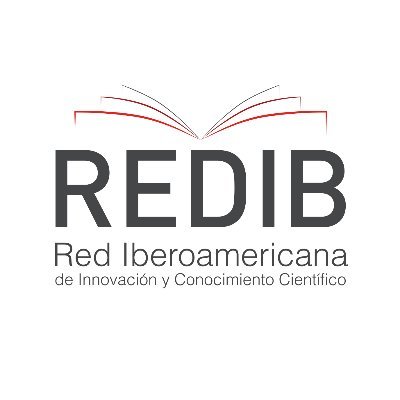Practical guide for the incorporation of pets in the family genogram
Keywords:
Companion animal, family, genogram, pet, psychoterapy.Abstract
Families are the main linking unit in the human species. Within it, rules, functions, identifying figures and relational styles are developed, which involve all its members. Nowadays, pets have become one more family member, their most remarkable characteristics being their affection, perseverance, acceptance and lack of judgment. Hence, the relevance of incorporating companion animals in clinical evaluations of their guardians and families is highlighted. Although the genogram is a frequently used tool for this purpose, the inclusion of pets —only recently proposed— is somewhat ambiguous and unclear. Therefore, this article aims to provide a guide for the systematization of the human-animal genograms. In addition, three clinical examples are analyzed and proposals for activities to incorporate animals in the genogram workshop are presented.
References
AVMA [American Veterinary Medical Association]. (2018). Pet Ownership & Demographic (2017-18). Disponible en: https://www.avma.org/News/PressRoom/Pages/AVMA-releases-latest-stats-on-pet-ownership-and-veterinary-care.aspx
Ceberio, M. R. (2005). Quién soy y de dónde vengo. El genograma: Un viaje por las interacciones y juegos familiares. Buenos Aires: Tres haches.
Ceberio, M. R. (2006). Viejas y nuevas familias. La transición hacia nuevas estructuras familiares. Interpsiquis 2006. 7º Congreso Virtual de Psiquiatría. Disponible en: http://hdl.handle.net/10401/3772
Ceberio, M. R., & Díaz Videla, M. (en evaluación). Las mascotas en el genograma familiar.
Charles, N. (2014). ‘Animals just love you as you are’: experiencing kinship across the species barrier. Sociology, 48(4), 715-730. DOI: 10.1177/0038038513515353
Charles, N., Davies, C., & Harris, C. (2008). Families in Transition: patterns of family formation and kinship networks, The Policy Press: Bristol
Díaz Videla, M. (2015). El miembro no humano de la familia: las mascotas a través del ciclo vital familiar. Revista Ciencia Animal, 9, 83-98.
Díaz Videla, M. (2017a). Antrozoología y la relación humano-perro. Buenos Aires: iRojo.
Díaz Videla, M. (2017b). ¿Qué es una mascota? objetos y miembros de la familia. Ajayu Órgano de Difusión Científica del Departamento de Psicología UCBSP, 15(1), 53-69.
Díaz Videla, M., & Ceberio, M. R. (en prensa). Las mascotas en el sistema familiar. Legitimidad, formación y dinámicas de las familias humano-animal. Dossier: Familias Ultramodernas. Revista de Psicología de la Universidad Nacional de La Plata.
GfK. (2016). Pet Ownership. Global GfK Survey. Disponible en: https://www.gfk.com/fileadmin/user_upload/country_one_pager/AR/documents/Global-GfK-survey_Pet-Ownership_2016.pdf
Hodgson, K., & Darling, M. (2011). Pets in the family: Practical approaches. Journal of the American Animal Hospital Association, 47(5), 299-305. DOI: 10.5326/JAAHA-MS-5695
Hodgson, K., Darling, M., Monavvari, A., & Freeman, D. (2018). Patient education tools: Using pets to empower patients’ self-care—A pilot study. Journal of Patient Experience, 2374373518809008, 1-5. DOI: 10.1177/2374373518809008
Kogan, L., & Blazina, C. (Eds.) (2019). Clinician's guide to treating companion animal issues. Academic Press. DOI: 10.1016/C2016-0-04244-4
McGoldrick, M., & Gerson, R. (1985). Genogramas en la evaluación familiar. Barcelona: Gedisa.
McGoldrick, M., Gerson, R., & Petry, S. (2008). Genograms: Assessment and intervention. New York: Norton.
Metcalf, L. (2011). The practice of marriage and family therapy. In L. Metcalf (Ed.), Marriage and family therapy: A practice-oriented approach (pp. 1-20). New York: Springer Publishing Company.
Schoenfeld-Tacher, R. M., & Kogan, L. R. (2019). The human-animal bond and hispanic clients in the United States. In L. Kogan & C. Blazina (Eds.), Clinician's Guide to Treating Companion Animal Issues (pp. 457-475). Academic Press. DOI: 10.1016/B978-0-12-812962-3.00024-1
Serpell, J. (1996). In the company of animals: A study of human-animal relationships. Cambridge: Cambridge University Press.
Turner, W. G. (2005). The role of companion animals throughout the family life cycle. Journal Of Family Social Work, 9(4), 11-21. DOI: 10.1300/J039v09n04̱02
Walsh, F. (2005). Resiliencia familiar: un marco de trabajo para la práctica clínica. Sistemas familiares, 21(1-2), 76-97.
Published
How to Cite
Issue
Section
The authors who publish in this journal accept the following conditions:
1. The authors retain the copyright and assign to the journal the right to first publication, with the work registered under the Creative Commons Attribution license, which allows third parties to use what has been published as long as they mention the authorship of the work and the first publication in this journal.
2. Authors may make other independent and additional contractual agreements for non-exclusive distribution of the version of the article published in this journal (e.g., inclusion in an institutional repository or publication in a book) provided that they clearly indicate that the work was first published in this journal.
3. Authors are permitted and encouraged to publish their work on the Internet (e.g., on institutional or personal pages) before and during the review and publication process, as this may lead to productive exchanges and greater and faster dissemination of published work (see The Effect of Open Access).









